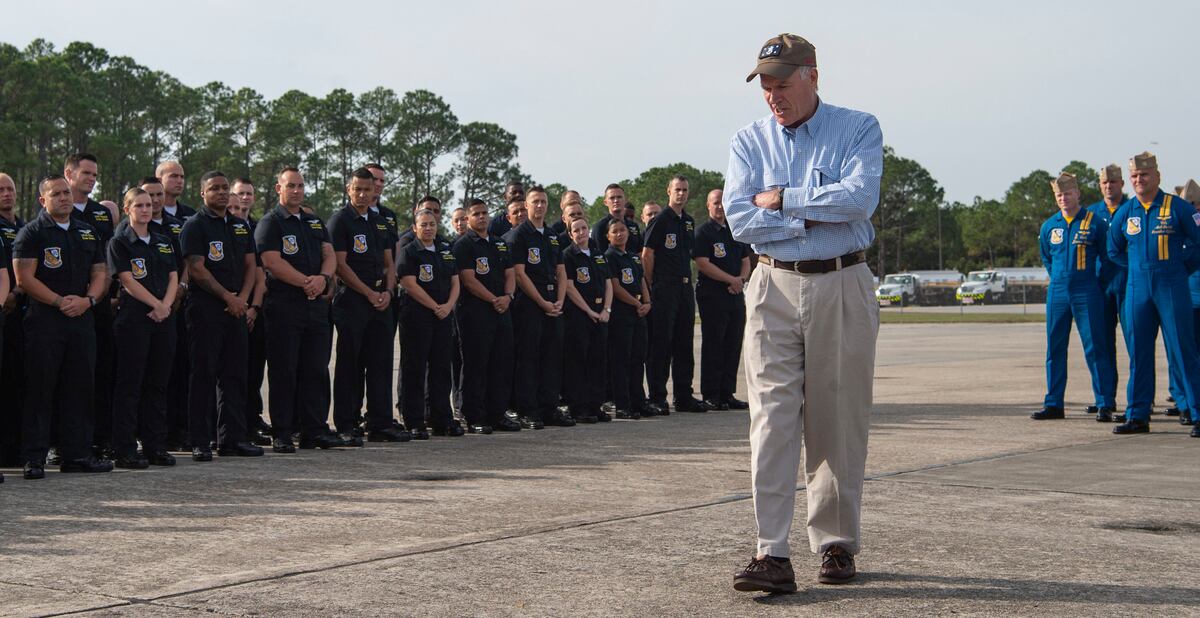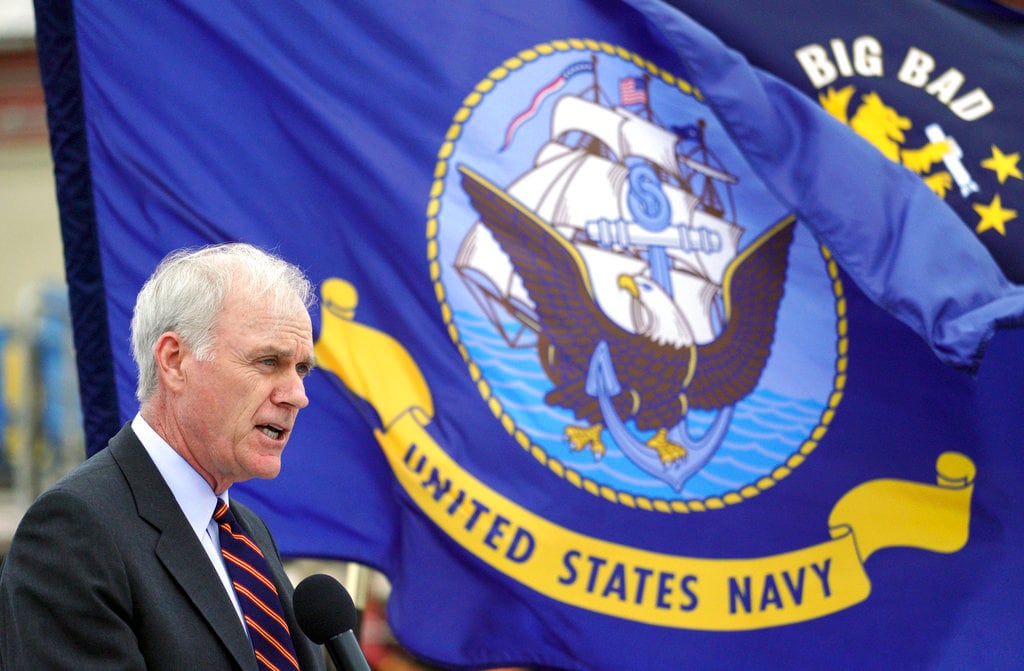WASHINGTON — Last week’s ouster of Secretary of the Navy Richard Spencer marked the latest in a string of leadership disasters for a beleaguered service, one that has seen a slew of admirals and senior captains reprimanded, fired or had their careers cut short for everything from ethics violations to poor performance on their watch.
Spencer was fired by Defense Secretary Mark Esper for allegedly going behind Esper’s back and cutting a deal with the White House to allow Special Warfare Operator Chief Eddie Gallagher to retire with his Trident pin, despite Spencer publicly saying he wanted to let the Trident Review Board process go forward. Gallagher was convicted at a July court-martial trial of posing in a photograph near a dead prisoner of war.
Spencer claimed he was resistant to President Donald Trump’s attempts to intervene well down the chain of command to block an administrative process to remove Gallagher’s pin, and Trump himself claimed Spencer’s performance was generally lacking.
But no matter whose story is the most credible, the firing of the secretary of the Navy means another leadership implosion in an organization that has seen a near-constant stream of them.
In the past four years, scandals, disasters and shoddy performance have cut short the careers of a confirmed chief of naval operations, the Pacific Fleet commander, the head of surface forces, the former head of 5th Fleet, the former head of 7th Fleet, two high-profile task force commanders and a destroyer squadron commander.
And that’s on top of the nearly dozen admirals and captains who were reprimanded in the wake of 2013’s revelations about Leonard “Fat Leonard” Francis, a Malaysian husbanding services provider who threw lavish parties and dinners for naval officers in the Pacific in hopes of securing business, then turned around and overcharged the government. Navy Times reported in May that at least 10 captains and admirals have been censured as part of the ongoing scandal, which has impacted their ability to promote and take senior leadership positions in the service.

The parade of scandals and mishaps, including two collisions with commercial tankers that claimed the lives of 17 sailors, raise deep cultural questions about the service on all fronts.
Operational and tactical shortfalls in 7th Fleet that contributed to the collisions resulted in a scything of nearly the entire senior leadership corps in the Pacific. Persistent drug and violent crime problems inside Naval Special Warfare have prompted an attempted crackdown and return to discipline inside that community. And the Navy’s legal community, already beset by allegations of failing their seniors by not raising more red flags over Fat Leonard, saw two high-profile cases dissolve in allegations of unlawful command influence and seemingly incompetent prosecution.
‘Rearranging the deck chairs’
Spencer in August ordered a complete review of the judge advocate general community, and top Navy SEAL Rear Adm. Collin Green has overseen a crackdown on SEAL behavior through a return-to-discipline approach. But some observers say the Navy needs focus more on fixing its culture.
“I absolutely think the Navy leadership needs to focus its attention on these cultural, behavioral and institutional issues, even more so than the future direction of the Navy,” said Bryan Clark, a retired submarine officer and analyst with the Center for Strategic and Budgetary Assessments. “The future direction, you need to start that rudder over now, but you’re not going to see significant changes to force structure or overall balance for years.
“So you can start that move, but that’s kind of like rearranging the deck chairs because the fundamental problems are these issues of behavior and culture.”
The issues of proficiency and readiness continue to dog the surface community; the aviation community is struggling to maintain its readiness against crushing demands; the submarine community has readiness challenges; and the SEAL community has serious readiness and behavioral problems, Clark added.
“I think every community has readiness and, to some degree, behavioral/cultural issues that need to be solved before the Navy can think about dramatically shifting in a new direction,” he said. “And I think the focus of the last few years on technology and force design has obscured the fact that Navy leadership should be focusing more on these personnel issues. Because they are only going to get worse.”
Bryan McGrath, a consultant who runs The Ferrybridge Group and a retired destroyer captain, said he has trouble finding a common thread between the various cultural and ethical issues in the service, but that the sheer number of issues may merit a deeper review.
“There have been a number of troubling issues that point to leadership, both uniformed and civilian. I think I would be an ostrich putting my head in the sand if I didn’t at least raise the possibility that there could be some fundamental leadership problems in the Navy right now," McGrath said.
“I can’t say that for sure because I come into contact all the time with really smart, really ethical people in high leadership positions in the Navy. But between Fat Leonard, the Pacific chain of command being relieved, the problems in the JAG Corps: These are troubling occurrences that merit a deep evaluation of the Navy from the inside, and perhaps from the outside as well.”
David B. Larter was the naval warfare reporter for Defense News.





